Filmmaker Vasanth Sai discusses how Sivaranjiniyum Innum Sila Pengalum came to be
In conversation with Vasanth Sai, whose Sivaranjaniyum Innum Sila Pengalum, won the Best Tamil Film, Best Supporting Female Actor (Lakshmi Priyaa Chandramouli) and Best Editing (Sreekar Prasad) at the 68th National Film Awards.
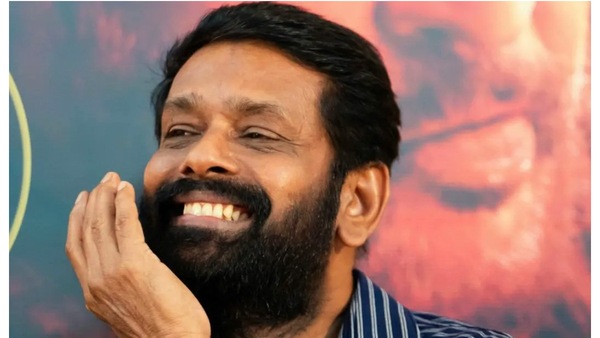
Last Updated: 01.49 AM, Aug 07, 2022
Whether it's Keladi Kanmani, Satham Podathey, or Sivaranjiniyum Innum Sila Pengalum (that streams on SonyLIV), Vasanth Sai has always grabbed your attention with a flair for bringing integrity to the characters he writes. “I had a feeling I wasn't doing films that emphasised the hero. I always say that the story is the hero, and I wholeheartedly believe it. Maybe, that's why even today we talk about Sarada teacher (Radikaa) and Chitra (Meena),” he smiles.
Excerpts from an interview:
You walk the line between parallel and commercial cinema and realise an artist's ambition without undermining the audience's expectations. How have you been doing this consistently, since 1990?
As a director, I enjoy the privilege of being morally connected to society. Further, I cast my films according to the need of the character. My first choice has always been actors rather than stars. I chose Ajith for Aasai not because he was a star, but he was a terrific performer.
You've been making movies for three decades. How difficult was it to get to this point where you make films without compromising?
I am drawn to realistic stories; at the same time, they are interesting enough to be different. I believe that films should be concerned with everyday life, with life as it is lived. It's important to stay up to date on how social movements are unfolding. I’ve never compromised because I knew that I would never be happy trying to make films differently. I know I have an audience and I care for them.
Could you please elaborate with an example?
Let's take Sarada in Keladi Kanmani. In the film, Radikaa played a middle-aged woman and also a caregiver for her differently-abled parents. Saradas existed in the 90s, and are relevant even today.
Do you write such rooted characters because you're from the KB school of cinema?
KB sir was a pioneer in filmmaking, and his cinema was ahead of his time. Truth be told, he was more than a guru. I was working as a freelance journalist with Indian Express, and later Savi (magazine). I graduated and was looking for a job. Eventually, I got to work with KB sir on 18 films, including Pudhu Pudhu Arthangal, Punnagai Mannan, Sindhu Bhairavi, and so on. I never thought I'd meet him, let alone work with him!

At a time when formulaic films and iconic stars dominated Tamil cinema, a young director emerged who created films that took a daring new look at the complexities of human relationships in a middle-class setting. For the first time in the Tamil film industry, the director's name was applauded on the title card. How beautiful was that? His distinct style of presenting unconventional storylines about ordinary people with a touch of realism stood in stark contrast to the gaudiness of the films of the time. Besides KB sir, CV Sridhar's films had a profound effect on me. I teared up while watching Sumaithangi and came out of the theatre a different person. I believe that a film should teach you something.
Undoubtedly, there is a market for realistic films. Your award-winning venture, Sivaranjiniyum Innum Sila Pengalum bears testimony to that. Did you feel bad that it never had a theatrical release?
Not at all. (Smiles) A good film wins any day; irrespective of the medium it's available on. I want my films to be as realistic as possible. And, I don't know how to do a film, otherwise. The journey of Sivaranjiniyum Innum Sila Pengalum began in 2018 when it received the Gender Equality award at the Mumbai Film Festival. Slowly, it travelled to various fests around the world. Then, by the time I was gearing up for its release, the Pandemic happened. I chose to put it on OTT. There was no point in delaying as I felt it would get old!
Sivaranjiniyum Innum Sila Pengalum is a collection of three 40-minute films based on stories by master Tamil writers Ashokamitran, Aadhavan, and B Jeyamohan. Film adaptations of Tamil literary works are uncommon. Interestingly, your previous work, Payasam which streams on Netflix is also an adaptation of a short story by T Janakiraman.
The adaptation of literary works to the big screen is not a new phenomenon in Tamil cinema. But it's more noticeable now. An author, usually, writes a book based on real-life experiences, with characters and reality that he transforms into fiction. A filmmaker creates a screenplay based on that fiction, and during pre-production, there is a detour back to reality, where there are real people, real places, and acting, editing, and adding music to it, which results in the form of a film as ‘new fiction’. I find this process creatively fulfilling.
All right. I assume you make changes to the original stories?
I don't think twice about making changes. There is no requirement that I faithfully adapt a novel or a story. In any case, an adaptation will never be exactly like the original story. It undergoes layers of changes. Movies are a visual medium that is more aggressive than books in that they do not allow us to imagine things and instead do the imagining for us.
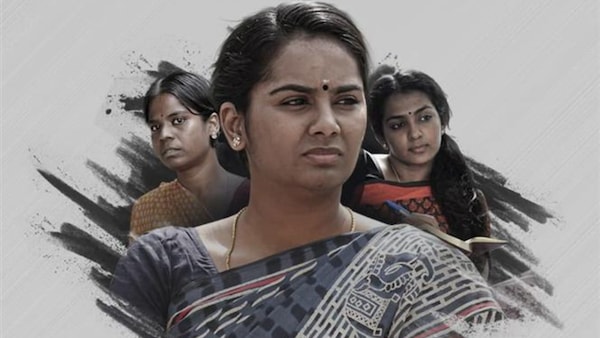
However, a good book does not always translate into a good film.
That's why reading is important. You know what works, and doesn't. (Smiles) There are numerous stumbling blocks on the path from a book to an adaptation, one of which is good screenwriting. For instance, first, there's the issue of squeezing 1,000 pages of a book into 120 pages of a script. How you adapt it for a new audience and medium without losing its essence is the biggest challenge of all. The internal conversations and thought processes of the characters take up a lot of character development and narrative space in books. Because these processes cannot be depicted on screen, you must plan accordingly when writing for a film.
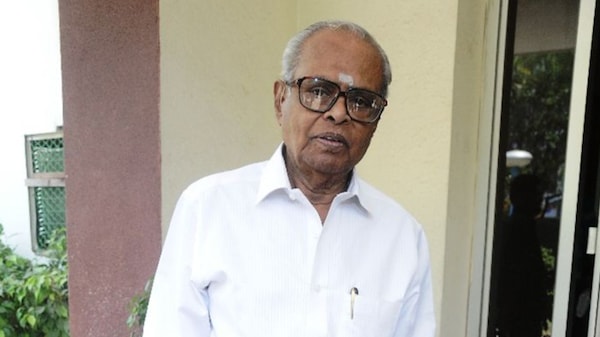
Also, entertainment considerations apart, why does a filmmaker choose only certain subjects?
KB sir sculpted his characters based on strong scripts. That was his strength, which later became his identity. I'd say partly that was the reason for his constant pursuit of introducing fresh talent into films. Although the 80s saw the entry of Bharathiraja, Mahendran and Balu Mahendra, KB sir remained unmatched. He avoided commercialism as far as he could and ventured into domains, which no one else dared to touch. That was the path KB sir took, which he was comfortable with. The audience, who had previously been hypnotised by the idealistic, fairy-tale, hero-centric world of celluloid, was surprised by his characters' person-next-door familiarity. Likewise, I am doing what I'm cut out for. You excel only when you create a niche for yourself.
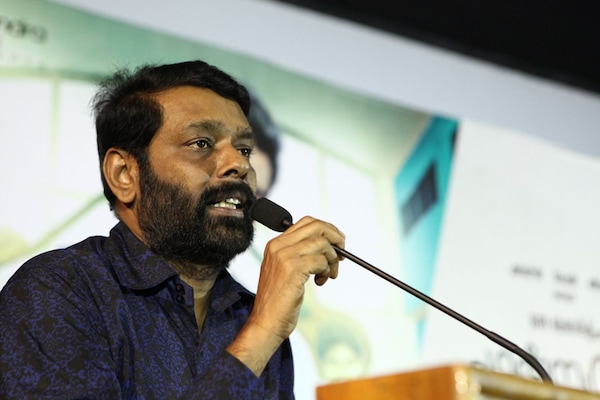
You don't (over) promote yourself. You make films at your pace, yet those stand out. Do you ever fear "not being relevant"?
(Laughs) I get what you're asking. I neither chase fame nor crave attention. Reputation is something that you've got no control over. I am here to tell stories, and that's all I do. I don't want to do what others are doing. Even though I know I can make a successful commercial film, I don't want to. Working in a parallel cinema space has become a trademark of mine. I think it's a personal choice. Some people want to tell stories the way they want to tell them. Sometimes people want to take the easy way out. Or some people enjoy telling a story that way. As a filmmaker, I strive to bring in a connection to the audience. See, I never start with a concept or a form. Content will create and find its form, eventually. I merely deal with situations in life and weave a story.
Satham Podathey happened in 2007. Then, you made Moondru Per Moondru Kadhal in 2013. After a three-year hiatus, your next was Sanath. Why do you take such long breaks?
I made the documentary Sanath in just two days! There are no concrete answers to your question. (Smiles) I need my space. And, I need to be with myself to figure out what's next. I wanted to remain truthful to the cinema. There were times when it was difficult to carry on, but finally, it was cinema itself that inspired me to go on.
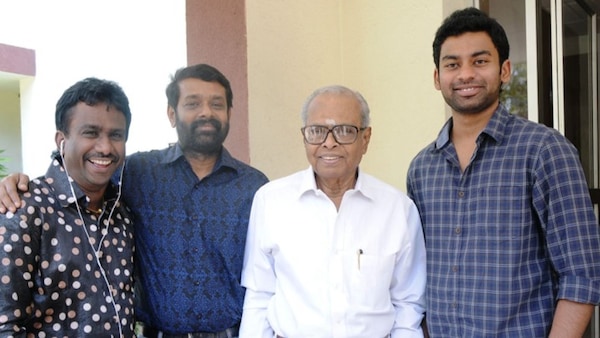
How do you breathe life into layered female characters?
There is something of me which gets invested in every character I create, irrespective of whether it's a man or woman. You can’t call them autobiographical but I am there in each of these films. Again, the credit goes to KB sir. I had seen him write strong single women characters in the 70s. Can anyone forget Apoorva Raagangal's cross-generational romance or Avargal's single mother's search for identity?
We frequently discuss the need for more female writers to write better women. What are your thoughts on this?
As a writer, I deal with complex emotive content in human beings. Variety in characters and screenplay make films get noticed. My films bring you to me even in 2022, and I'm happy about it. They will in the future, too. That said, certainly, there's a need for more female writers.
But, writers like you are a rarity, these days in Tamil cinema. How do you come up with a female perspective?
I believe inside each of us is a woman and a man. We all have both good and bad in us. You will feel love and respect for women if you write about them. If you only have negative feelings about women, your writing will reflect that. However, if a woman writes, we will be able to see and experience new perspectives. I should admit that I can't delve deep like how a female writer does.
At this stage in your life and career, how do you view cinema?
Cinema in the traditional sense no longer exists. When making a film today, you must be aware that it will be seen in a large cinema hall as well as on a smaller screen or even on a cellphone. You never considered these things before. It does, to some extent, influence how you make a film.
Which film do you think has come closest to what you wanted to achieve?
It's difficult for me to single out any film as my favourite. (Smiles) But I'd like to continue what I was doing. I think filmmakers who make parallel or art or realistic cinema, whatever you may call it, should continue doing only that.
Subscribe to our newsletter for top content, delivered fast.

